A TOX is an air pollution control unit used to destroy and remove HAPs and VOCs from industrial airstreams through thermal combustion at extremely high temperatures. The most common and advanced process unit in use today is an RTO, which regenerates the heat required for the (next) combustion cycle from the previous cycle by using a specialised ceramic media heat exchanger. The exhaust duct conveying the process (waste) air into the RTO should be regularly cleaned to mitigate the risk of reduced operational efficiency, explosion, and unit damage.
By Craig J R Thomas, JettyRobot Ambassador, HVAC/R Coating Specialist & Senior Managing Consultant – The Pipe-Sol Consultancy Ltd
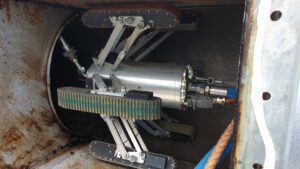
A thermal oxidiser (TOX) is a process unit used for air pollution control in many industrial and chemical plants around the world. A TOX is typically used to destroy and therefore remove hazardous air pollutants (HAPs) and volatile organic compounds (VOCs) from industrial airstreams through thermal combustion. As these HAPs and VOCs tend to be hydrocarbon-based, when ignited at temperatures of 590-650°C (1094-1202°F)¹, they are chemically oxidised to form Carbon Dioxide (CO₂) and Water (H₂O) before being exhausted into the atmosphere.
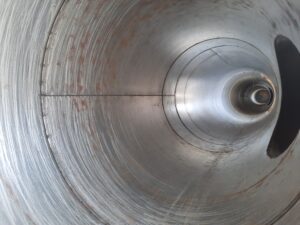

To ensure almost complete destruction of the hazardous gases and organic compounds in the waste airstream, most thermal oxidisers are operated at significantly higher temperatures; the US EPA estimates around 980-1200°C (1796-2192°F)¹. There are many types of TOX in use today, all of which have several common features. Two of these components are the heat exchanger mechanism and the exhaust system that feeds into and out of the TOX, which needs to be regularly cleaned to ensure ultimate efficiency and reduced explosion risk. The aim of this article is to examine how the “secondary” exhaust systems can be cleaned, why they need to be cleaned, and the benefits to the operator. The article uses two real-life case studies.
Case study 1 – Aluminium beverage can manufacturer


A critical area of the production plant of this global aluminium beverage can manufacturer (ABCM) is the paint shop. The exhaust system from the paint shop comprises an extensive network of pipes both inside the production hall and on the roof of this building. The diameter of these exhaust ducts ranges between 300-1200 mm (11.8-47.2 in), and these consist of vertical, horizontal, and elbow sections.
These pipes convey the fumes from the paint shop to a Regenerative Thermal Oxidiser (RTO), which converts the HAPs and VOCs from the exhaust (waste air) stream by means of oxidation into CO₂ and H₂O before releasing into the atmosphere.
The exhaust system is equipped with high performance fans, which generate high velocity air flows in the ductwork. Despite the air moving at high speed, paint residues are still deposited along the entire length of the ductwork. Regular cleaning of the ducts will help to reduce or negate the impact of these paint residue deposits shown in Table 1.


In the past, cleaning was carried out manually; trained maintenance personnel entered and moved around inside the ducts scraping away the deposited material with spatulas. This critical maintenance work caused a range of associated problems as laid out in Table 2.


ABCM decided this process was neither “healthy” nor sustainable, and so decided to seek an alternative high performance cleaning method.


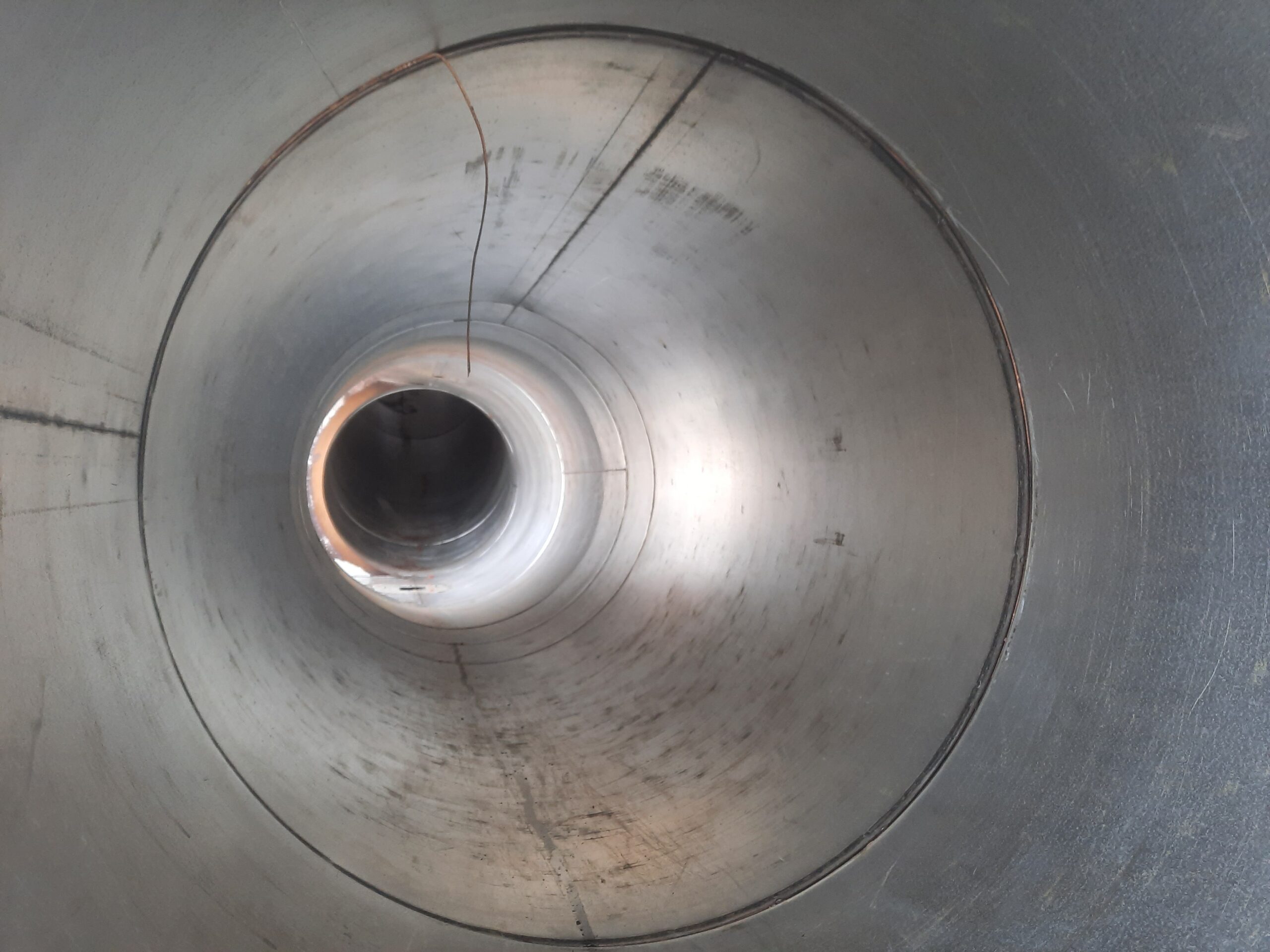



Robotic cleaning technology
A newer, more innovative cleaning technique is the use of a robot to carry out critical industrial exhaust maintenance. A robot can typically be purchased directly from the technology equipment supplier or rented so that the equipment operator or a maintenance service company can carry out the work themselves.


Alternatively, a robotic duct cleaning service can typically be provided by the same robot technology equipment provider. After a thorough investigation by ABCM of the solutions available, JettyRobot was selected.
Robots were originally developed to clean HVAC ducts. They can also be employed to clean industrial exhausts in a multitude of different industries and environments (shown in Table 3).


The robots used in duct cleaning are characterised by having some common components. They can then be modified for the specific task or project through a series of accessories (Table 4).
A uniquely designed belt robot based on space technology will clean industrial exhausts and vents, and in fact any spaces where cleaning is arduous or impossible without dismantling of the ductwork with an extremely high degree of efficiency and effectiveness. These robots offer many advantages compared to traditional duct cleaning methods and even to standard robotic cleaning technology.
Two design features worthy of specific mention are the robots’ stability in service and their suitability for all duct shapes. The robot is centred in and “propped” (pneumatically locked) against the side of the duct, generating sufficient stability to even allow for the use of intensive or high pressure cleaning methods. Its multi-tracked body allows it to expand (under pneumatic pressure) to the required size of the duct and easily pass through, inspect, and clean circular, rectangular or square-shaped ducts in both horizontal and vertical planes; they can also handle slopes, as well as negotiate S-shaped ducting and various turns.


Deploying a high performance, space-engineered robot with dry ice cleaning module has proven to be a highly effective solution to remove the build-up of paint residue deposits for ABCM. Consequently, this cleaning technology has now been introduced as part of the company’s regular maintenance procedures. The benefits of using a robot exhaust duct cleaning system include:
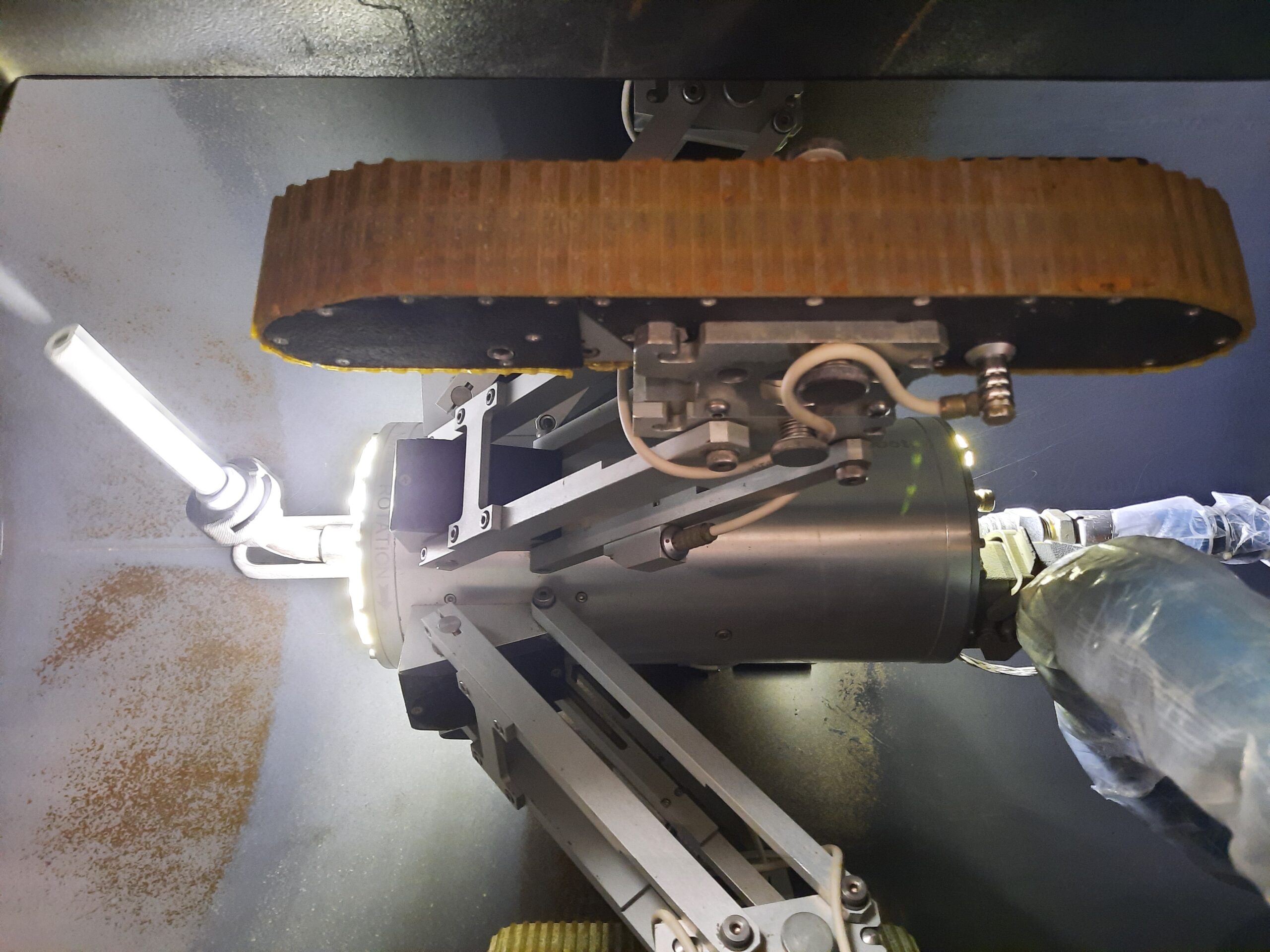



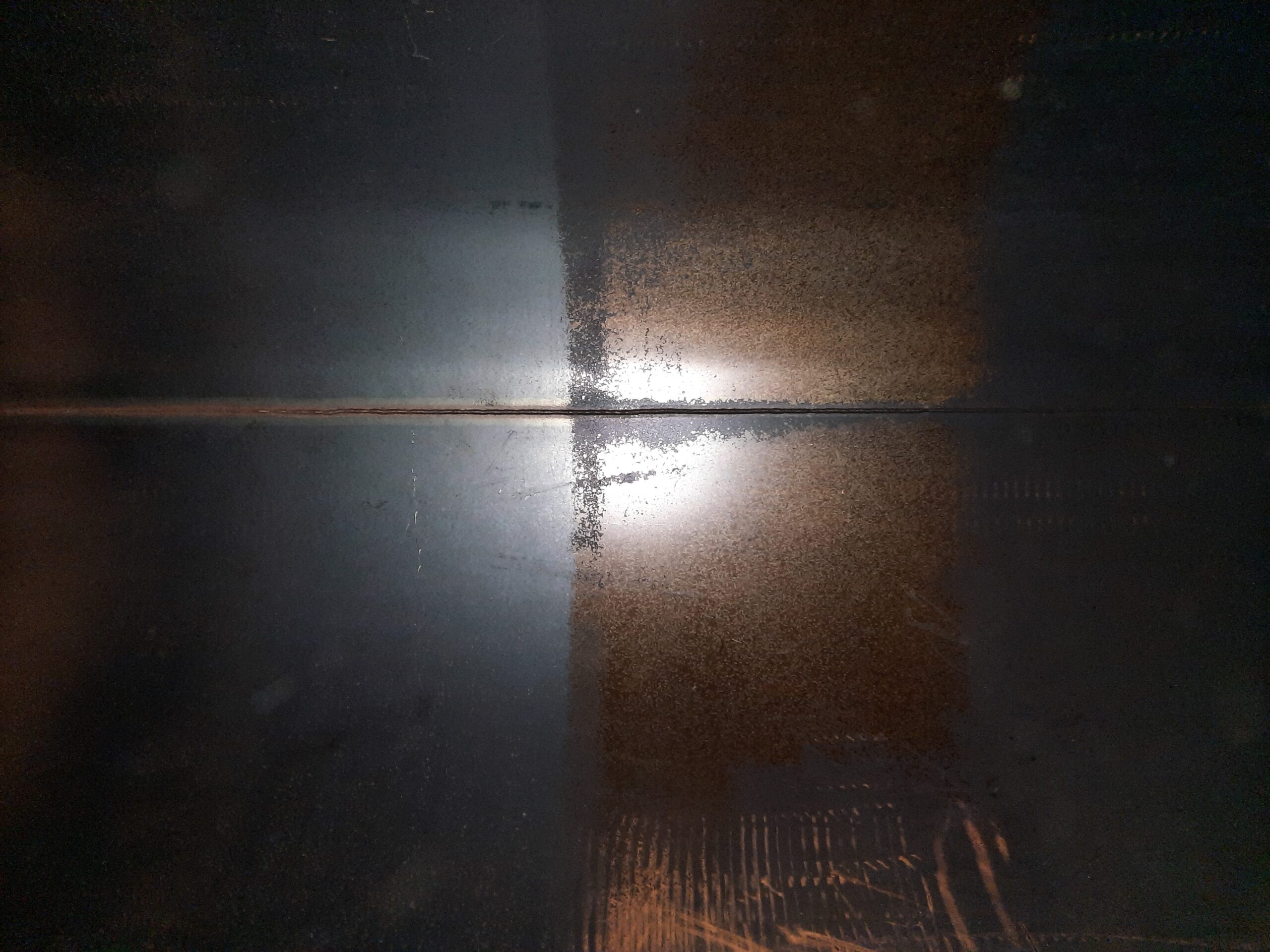

Case study 2 – Metal food can manufacturer
This company produces and supplies metal packaging for a wide variety of applications and industries. One plant within the company group manufactures metal food cans (MFCM), which are painted using two lines, the fumes from which are removed from the production plant using an extensive extraction system. One line is used to paint the inside of the cans, the second line is used to paint the outside of the cans, and the extraction systems from both lines merge into a single duct, which then leads to a single RTO. There is also a third duct system, which is used only to extract dust deposits. The ductwork varies in diametric size (300-800 mm (11.8-31.5 in)) and inclination with vertical and horizontal sections as well as elbows.
As per the company in the first case study, high-powered fans are used as part of the exhaust system to create high velocity air flow to remove paint fumes and dust from the coating lines, but deposits of paint residue can still be found throughout the entire ductwork. The critical impact of these residue deposits can be seen in Table 1.
After a thorough analysis of the coating line operation, it was established that each coating line had different types of deposits, and therefore each line required a different cleaning setup. Even though the entire exhaust and RTO system were relatively new and had never been cleaned before, it was decided that a regular duct cleaning programme would be implemented to avoid the potential impact of paint residue deposits or reduce certain risks to zero.
MFCM decided to select JettyRobot as its technology solution provider based on extensive research in and suitable track record relating to the field of industrial exhaust cleaning. Robotic duct cleaning using dry ice has shown itself to be a highly efficient and effective solution for the company to remove these types of coating residues. The benefits are identical to the first case study – see Table 5.
Conclusion
In order to maximise the efficiency of the exhaust system feeding into the RTO, reduce the risk of explosion from paint residues deposited in the complex and extensive ductwork used to ensure a healthy and safe working environment, and alleviate any potential RTO downtime and/or compromised performance caused by damage from large paint flakes or pieces of detached residue entering the TOX, there is a strong argument for regular duct cleaning using high performance belt robot technology. This is borne out by the critical maintenance strategy adopted by the two companies featured in the article case studies.
References
- “Air Pollution Control Technology Fact Sheet: Thermal Incinerator” (EPA-452/F-03-022),
https://www.epa.gov/catc/clean-air-technology-centerproducts#factsheets, https://nepis.epa.gov/Exe/ZyPDF.cgi/P100RQ6F.PDF?Dockey=P100RQ6F.PDF, Clean Air Technology Center, USA EPA, 2003. - “What is a Regenerative Thermal Oxidizer?”, https://www.konokogs.com/regenerative-thermal-oxidizers-rto/, Accessed: 27 May 2023.
- “Regenerative Thermal Oxidizer”, https://www.tanncorporation.com/product/regenerative-thermal-oxidizer/, Accessed: 27 May 2023.
- “Thermal Oxidizers: Regenerative Oxidizers”, https://eisuk.co.uk/thermal-oxidisers-from-uk-based-eis.html, Access: 27 May 2023.
What is an RTO?
An RTO is the most common air pollution control technology used in industry today. It offers the lowest operating costs compared to other TOX systems together with a high rate of reliability and long service life. The term “regenerative” comes from the fact that a ceramic media heat exchanger is used, which retains the heat from the prior combustion cycle to pre-heat the HAP- and VOC-containing airstream for the next cycle. The ceramic media come in the form of saddles and/or structured honeycomb blocks. RTOs can achieve considerably higher thermal efficiencies than a shell and tube or a plate heat exchanger – 95% as an industry standard² and some manufacturers claim as high as 97-98%³˒⁴, which can significantly reduce natural gas usage by up to 90%³. Due to their high thermal efficiency, RTOs can go into “self-sustain” (or “autothermal” / “flameless”) mode, in which the natural gas burner totally shuts off, thereby using no gas at all.
About the author


About this Featured Story
This Featured Story was first published in Heat Exchanger World Magazine in July 2023. To read more Featured Stories and many other articles, subscribe to our print magazine.
Featured Stories are regularly shared with our Heat Exchanger World community. Join us and share your own Featured Story on Heat Exchanger World online and in print.


